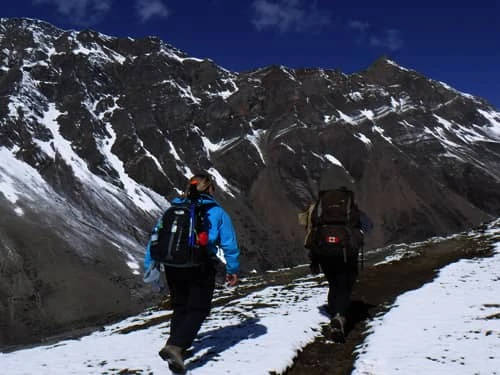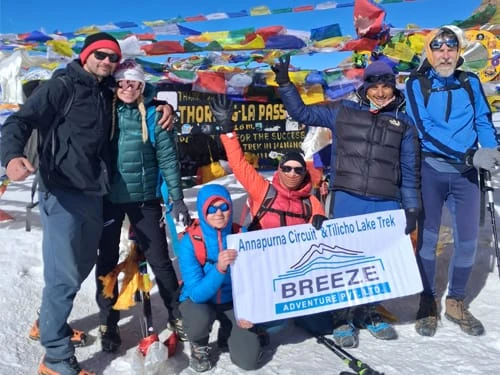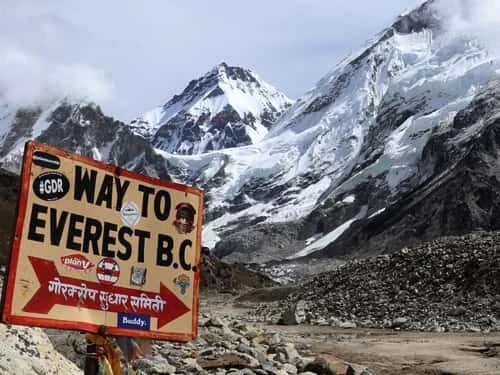Nepalese cuisine offers a vibrant mix of flavors that capture Nepal's diverse cultural heritage. The Nepali culinary heritage is intricately linked to its varied geography and vibrant cultural fabric. Aside from providing a great food experience, Nepali foods are also very healthy, offering properly balanced meals and unique health benefits. The true essence of our Nepali food lies in its traditional cooking techniques and use of local homegrown ingredients. Delving into Nepali food recipes reveals various flavors and traditions, showcasing some of the best Nepali food available
Best Nepali Food
Table of Contents
What comes to your mind when you think about Nepali Food? Probably MoMo or Dal Bhat right? But Nepali cuisine is much more than that and offers a vibrant mix of flavors that capture Nepal's diverse cultural heritage.
Most of the dishes here are based on the Himalayan agricultural legacy. As they prioritize using foods that are fresh and locally produced. The true essence of our food lies in its traditional cooking techniques. This technirque involves firewood and stone grinders instead of fancy culinary appliances.
Nepali food culture
The dietary staples and traditional Nepali dishes in almost every region of Nepal include grains (rice, wheat, corn, millet), root vegetables (potato, yam), and different types of lentils. Additionally, local spices like Timur (Szechuan pepper), mustard seeds, homegrown turmeric, etc. are used to prepare these foods, adding a unique flavor to the fare.
All these varieties of ingredients used indicate that Nepali food culture is a rich reflection of the country’s diverse ethnic and regional influences. The food culture here also believes in fostering community and togetherness, so the foods are mostly family-style.
Food History in Nepal
The Nepali culinary heritage is intricately linked to its varied geography and vibrant cultural fabric. Early diets were based on staple foods including rice, millet, and seasonal veggies. These testaments to traditional farming methods are still prevalent today.
High-altitude regions introduced barley and potatoes into daily menus due to Himalayan agriculture’s unique demands. Traditional recipes evolved by blending traditional ingredients with generational knowledge about preparation styles rooted deeply within families’ histories.
Alongside, religious beliefs strongly influence Nepalese food, making vegetarian options common among many groups. Exquisite festive delicacies for occasions like Dashain or Tihar continue time-honored dining customs that have been finely preserved over the ages.
Health Benefits of Nepali Foods
As most Nepali foods are based on locally grown vegetables and grains, these foods are very high in nutrition. Most Nepali meals, except some street foods, are health-friendly and they satisfy your craving without giving you any future health complications.
There are several health benefits of Nepali foods including, high fiber content, local and nutritious ingredients, low Glycemic Index, and a proper balance of nutrition.
Traditionally, Nepalese had to eat foods that gave them energy all day long to work in the agricultural field. So pairing up proteins ( legumes, pulses, beans) with carbs (rice, dhindo), for daily consumption was a very smart idea.
Most Popular Cuisine in Nepal
You might have heard your Nepali friend saying, “Dal bhat power, twenty-four hour”. It is because Dal Bhat (rice and lentils) is undoubtedly the best Nepali cuisine that provides you, comfort, and satisfaction, along with great taste.
Aloo Tama is another authentic Nepali food that is popular among us Nepalese, which is simply a curry of potatoes and bamboo shoots. Nepal's kitchen delights include the much-loved momo—savory dumplings bursting with flavor from their Tibetan roots often paired with fiery dips.
Another favorite is Sel roti; think of it as a delightful twist on doughnuts made from rice flour. And let’s not forget gundruk: tangy fermented greens offering an earthy taste sensation.
You can further explore the remote areas of Nepal by going on a remote Nepal trek, for that raw and unfiltered taste of Nepalese Cuisine.
Nepali Vegetarian Cuisine
Talking about vegetarian Nepali dishes, dal bhat with vegetable curry still tops the list. Then there are also veg options available for MoMo which includes paneer (cottage cheese) or vegetable stuffings.
Other than that, different dishes like aloo paratha (potato stuffed bread), puri tarkari (flat-bread with veg curry), veg chowmein, etc. are easily available in hotels and restaurants in Nepal. Besides, street foods also have vegetarian menus like samosa, Aalo-chop, chana Chatpatey, and Sekuwa (grilled veggie skewers).
Overall, there should not be any problem in finding vegetarian dishes in Nepali Cuisine Recipes, as it offers a variety of dishes for those who avoid meat.
Nepali non-vegetarian cuisine
Masu bhat (meat curry with rice) is another comfort food for most Nepalese, all over the country. Chicken curry and lamb curry are quite a popular option for enjoying non-vegetarian Nepali delights. Similarly, chicken momo, buff momo (buffalo meat stuffing), and pork momo are also loved by many.
Newari food delicacies are also on the top of non-veg food options. Choila (spicy meat), Kachila (spicy minced buffalo meat), and sekuwa (meat skewers) are mainly offered in Newari food.
However, Nepali cuisine doesn't include beef as the cow is our National animal. But, in some restaurants of Thamel, beef is imported from close neighbor nations and is served as a part of international cuisines.
Nepali Street Food
Street foods are also an important part of exploring Nepali spices. Nepali street food offers you great taste with fast service and minimum cost. Street foods like momo, chowmein, Chatpatey, chaat, etc. are easily available at affordable prices in different alleys of Nepal.
Imagine a burst of spicy and tangy flavors, that is what most of the street foods in Nepal offer you. Not only this but some local street foods like bara and chatamari from Nweari vendors will give you the actual taste of Nepali culture.
Here is the list of some must-try Nepali street foods, for your next trip here:
Nepali Momo
The famous Nepali momos are surely the tourists' favorite Nepali Cuisine. These are steam-cooked flour, stuffed with different savory fillings, and served with a spicy and tart achar (a blend of tomato, sesame, peanuts, and spices).
Bara
Bara is another must-try street food in Nepal, originating from the Newari community. It can be considered a Nepali Pancake but in savory flavor and made with ground black lentil paste mixed with spices.
Samosa
In Nepali street food culture, samosas are highly valued for their delicious fillings and crispy outer layer. These tasty, substantial triangle delights are filled with a blend of peas and seasoned potatoes. For first-time visitors, samosas are a must-try Nepali food for Beginners. Surprisingly, the locals of Butwal refer to puff pastries as Samosa, as that becomes a different item.
Poleko Makai
Poleko Makai (corn skewers) is also another not to miss street food of Nepal. Fresh corn ears are carefully roasted by vendors over open flames, perfectly charring the kernels.
Sekuwa
Sekuwa is a typical Nepali street food that is prepared by roasting meats in fire coals, to give it a smoky flavor. Chicken, pork, mutton, or buffalo meat is used for this and the meat is marinated well with local spices, before roasting.
Bhakka
Bhakka is a simple steamed rice flour cake, especially consumed in the winter. It is a traditional Tharu delicacy most popular in the Jhapa district. Served with tangy chutney or achar, Nepali food bhakka is a flavorful and affordable snack, typically priced between NPR 50 to NPR 100 ($0.50 to $1).
Chatpatey
Another popular and one of the top 10 Nepali foods is chatpatey. Puffed rice, chopped onions, tomatoes, cooked potatoes, green chilies, and coriander are combined with tamarind sauce, lemon juice, and a zesty spice mixture to create this heavenly and savory snack.
Panipuri
When strolling through the busy streets of Nepal, you simply shouldn't skip over the lively stalls offering panipuri, a popular local treat. Small crispy fried flour balls, filled with a mixture of spicy mashed potatoes and tangy water. This is what a panipuri looks like and gives you a flavourful explosion of local spices.
Nepali Breads
When talking about Nepali bread, roti is the most common and well-known item. But you might be surprised to know that there are different other types of Nepali bread originating from various regions. The Himalayan region is fond of Gurung bread, and the mid-hilly region has Sel-roti and Poori rule the Terai region.
The more you explore the local settlements of Nepal, the more varieties of Nepali breads you will find. Let’s talk about some breads from the Nepali cuisine. You might know some while others can be new for you.
Sel-roti
Sel-roti is traditional Nepali sweet bread, prepared for special occasions like marriage ceremonies, pujas, and festivals..
Buckwheat Bread
Locally known as fapar ko roti, Buckwheat bread is a soft flatbread made from buckwheat flour. In the mountain regions, this bread is consumed for rich protein, fiber, and energy.
Tibetan Bread
In Nepal's varied food landscape, Tibetan bread sometimes referred to as "Balep," is made with wheat flour, water, and a small amount of baking soda. This straightforward flatbread is griddle-cooked until it has a mild flavor and a slightly chewy texture.
Gurung bread
Gurung bread is a typical flatbread with a crispy, golden texture that originates from Nepal's high mountain regions. This straightforward yet delicious bread demonstrates the ingenuity and inventiveness of Nepal's high-altitude cuisine.
Pani Roti
The literal meaning of pani roti is water bread. It is a comfort food that resides in every Nepali household. It is also called the lazy roti because of its super easy preparation. You just need water and flour, mix it, pour in the hot griddle, and it's done.
Kodo ko Roti
Kodo ko roti is a bread consumed in Nepal that is made from millet, one of the staple crops in Nepal. It is a typical example of Nepali home cooking. Beyond just a dish, kodo ko Roti embodies the rich customs and regional ingredients of Nepal's varied cookery past.
Traditional Nepali Food
Traditional Nepali food showcases the nation's rich cultural legacy with a variety of flavors from many locations. Unique foods, such as Yomari, a Newari specialty packed with sweet molasses and sesame seeds, are a delight for the senses.
Traditional dishes from the Tharu region, like rice flour dumplings called Bagiya and Dhikri, are a contribution. Thukpa is a filling noodle soup that has been influenced by nearby Tibet. In addition, the Terai region is known for its delicious lentil-based doughnuts, known as Batuk. Foodies should not miss the following traditional dishes of Nepal:
Kwati
A blend of nine distinct sprouting beans, including black-eyed peas, mung beans, chickpeas, and soybeans, are used to make the traditional Nepali soup Kwati. This healthy dish is particularly well-liked around the Janai Purnima festival.
Yomari
Yomari is a cherished Newari delicacy originating from Nepal's Kathmandu Valley. These steamed dumplings are crafted from rice flour dough, and molded into distinctive fish or fig shapes. They are typically filled with sweet Chakku (molasses) and sesame seeds, or sometimes Khuwa (milk solids).
Chakku
Made from concentrated sugarcane juice or molasses, Chakku is a popular Nepalese dessert with a thick, sticky texture and a rich, deep flavor. Chakku, well-known for its stimulating and warming properties, is especially loved in the winter.
Dhikri
A traditional dish from the Tharu community in Nepal is called Dhikri. These steamed dumplings, or flat discs, are made from rice flour and come in different shapes It has a soft, chewy texture and is usually eaten with pickles, chutneys, or curries.
Bagiya
The Tharu people of Nepal make Bagiya, a traditional meal made from rice flour molded into small, elongated pieces. When paired with a variety of sides such as pickles, chutneys, or spicy curries, Bagiya has a simple, soothing flavor and a soft, somewhat chewy texture.
Rilduk
Made from a basic dough of rice flour and water, Rilduk is a traditional Tharu meal from Nepal. Little round dumplings are formed out of this mixture and steam-cooked until tender.
Batuk
Lentil flour is used to form tiny, spherical dumplings or fritters called Batuk, which are then deep-fried till golden crisp. Batuk is a favorite option for festivals, special occasions, and everyday delight with its crispy surface and soft, savory interior.
Thukpa
Thukpa is a robust noodle soup with Tibetan origins that has gained popularity in Nepal, especially in areas influenced by Tibetan cuisine. This dish includes meat or vegetables, noodles, and a flavorful broth enriched with garlic, ginger, and spices. If you have been on either the ABC trek or any other upper region trek like the Kanchenjunga trek then you might have tried these.
Nepali appetizers
Nepali appetizers offer a delicious taste of the country's diversified kitchen. A popular option is momo, which are steamed dumplings filled with spicy meat or veggies and usually served with a tart tomato chutney. Choila, a spicy marinated beef dish, is perfect for grilled food lovers, and vegetarians will love aloo achar, a tart potato salad.
The unusual rice-based doughnut known as Sel roti gives the appetizer spread a sweet touch. These recipes offer a mouthwatering sample of Nepal's colorful cuisine while showcasing the country's creative use of regional ingredients and strong tastes. Here are some dishes that you can not miss:
Sadeko Sukuti
A traditional dish from Nepal, Sadeko Sukuti is made with dried meat, usually, buffalo or goat, marinated in a mixture of spices and sautéed. Sadeko Sukuti, well-known for its zesty and spicy flavor, is a popular starter and snack in Nepal.
Sadeko Badam
A popular snack in Nepal, Sadeko badam is made with roasted peanuts and a mixture of fresh herbs and spices. Finely sliced onions, juicy tomatoes, cilantro, green chiles, lemon juice, and spices like turmeric and cumin are important components.
Chicken Sadeko
A blend of fresh ingredients and marinated, shredded chicken is used to make the delectable Nepalese dish known as Chicken Sadeko. It's combined with diced onions, tomatoes, cilantro, green chilies, and mustard oil along with spices including cumin, turmeric, and lemon juice.
Pakauda
An assortment of vegetables, meat, or fish are dipped in a spiced chickpea flour batter and deep-fried to a crispy, golden perfection to create Pakauda, a beloved snack in Nepali and South Asian cuisine.
Choila
The traditional Nepalese cuisine, Choila is praised for its powerful and fiery taste. It has grilled or barbecued meat, usually goat or buffalo, marinated in a mixture of spices, ginger, and occasionally yogurt.
Kachila
A unique treat from Nepal, Kachila is made of finely chopped or shredded raw meat, usually buffalo or goat. A powerful mixture of herbs and spices, such as garlic, ginger, and chili powder, along with other aromatic seasonings, are used to season the meat.
Mustang Aalu
A unique delicacy from Nepal's Mustang area, Mustang Aalu is renowned for its tasty potato preparation. The cuisine consists of boiled or steamed potatoes cooked with a blend of regional spices, including chili powder, cumin, and turmeric. If you are planning to go on a trek in the Mustang region of Nepal then don't forget to try this dish. However, you can find this in most of the restaurants in Kathmandu.
Nepali Main Dishes
The vivid and varied food journey offered by Nepali's main meals is ideal for tourists from other countries, keen to try new cuisines. Dal Bhat is a traditional dish that consists of steamed rice and lentil soup, occasionally with additional vegetables, pickles, and meat. Momo is another must-try dish; they are mouthwatering dumplings stuffed with veggies or meat and accompanied by hot chutneys. Taste the flavor of the Himalayas with Thukpa, a hearty noodle soup. These recipes highlight Nepal's abundance of spices as well as its rich cultural legacy and friendly people. Try these:
Dal Bhat
Steamed rice and lentil soup are combined to make the typical Nepali food, Dal Bhat, an everyday dish in Nepal. This healthy pair is often served with spicy pickles, vegetable curries, and sometimes meat or seafood. It presents the Nepali people's typical diet and offers a filling and delicious introduction to their culinary traditions.
Dhindo
A traditional meal from Nepal called dhindo is prepared by cooking millet or buckwheat flour in water until it becomes thick and doughy. It's a staple in rural areas, usually served with pickles, various meat or vegetable curries, and gundruk (fermented leafy greens).
Newari Set
A Newari Set is a customary main course from Nepal's Newar community, renowned for its complex flavors and wide diversity. It mainly includes lentil patties (bara), spiced potatoes, grilled buffalo meat (Choila), fermented radish (gundruk), beaten rice (chiura), and many more.
Chatamari (Nepali Pizza)
A unique rice bread known as "Nepali pizza," chatamari originates from the Newar community in Nepal. It's made with a thin batter of rice flour put over a heated skillet and topped with spices, veggies, eggs, and minced meat.
Chowmein
In Nepal, chowmein is a popular noodle meal with lots of flavor. Combining various veggies, meats, and a flavorful sauce, it is stir-fried to create a delightful combination of flavors and textures.
Nepali Local Drinks
Nepal's local drinks offer a fascinating glimpse into its cultural traditions. Raksi, a distinctive Nepali rice wine, delivers a potent and flavorful experience often enjoyed on festive occasions.
Tongba, a traditional Himalayan brew made from fermented millet, is served hot and sipped through a bamboo straw, showcasing a unique mountain flavor. Chhyang, a mildly alcoholic cultural drink from fermented barley, is commonly shared during social gatherings. You can enjoy the local authentic taste of this drink during mountain valley treks in the Manaslu region.
Nepali tea culture is highlighted by masala tea, a spiced and aromatic brew. Lastly, lassi, a creamy Nepali yogurt drink, provides a refreshing and cooling contrast. Below is a short Nepali beverages guide for you:
Nepali Alcoholic Hard Drinks
Raksi
Raksi is a special rice wine from Nepal that is beloved for its intense flavor. Enjoyed either straight or mixed with cocktails, this Nepali rice wine offers a unique and genuine taste of Nepalese beverages.
Chhyang
Chhyang is a traditional Nepali drink made from fermented barley or millet, known for its mildly alcoholic and slightly tangy flavor. As a significant cultural drink, Chhyang offers a distinctive taste of Nepal’s Tamang community. You can consider going to a typical Tamang valley of Nepal for the best taste.
Aaila
Aaila is a potent Nepali hard drink made from distilled rice or barley, renowned for its robust flavor. This strong drink is commonly enjoyed during festivals and social events, often served in small amounts.
Jaad
Jaad is a traditional Nepali drink crafted from fermented rice or millet, offering a lightly alcoholic and tangy flavor. Popular in rural areas and during festive gatherings, it is typically served in large shared bowls.
Tongba
Tongba is a traditional Himalayan brew from Nepal made from fermented millet. This distinctive beverage is enjoyed by adding hot water to the fermented grains, which are then sipped through a bamboo straw.
Nepali Soft Drinks (Non-Alcoholic)
Nepali soft drinks present a diverse range of non-alcoholic options from different parts of Nepal, that cater to different tastes. Nepali Masala Tea combines black tea with aromatic spices such as cardamom and ginger for a rich and comforting flavor.
Nepali Green Tea offers a refreshing and light alternative, appreciated for its subtlety and health benefits. Tibetan Tea is a unique blend, often enriched with butter and salt for a hearty taste. Lassi is a smooth yogurt-based drink, perfect for a cooling effect.
Smoothies and Bubble Tea introduce modern flavors with fresh fruit and chewy tapioca pearls. Mohi, a traditional buttermilk drink, and Shikanji, a spiced lemonade, bring distinct regional flavors to the mix.
The following are the drinks and their brief introduction:
Nepali Masala Tea: Black tea infused with a blend of spices like cardamom and ginger for a flavorful, warming drink.
Nepali Green Tea: A refreshing tea made from green tea leaves, known for its light taste and health benefits.
Tibetan Tea: A unique tea prepared with butter and salt, offering a rich, savory flavor.
Lassi: A smooth yogurt drink that can be sweetened or spiced, perfect for a cooling effect.
Smoothie: A blended drink featuring fresh fruits, and sometimes yogurt or milk, for a creamy and flavorful treat.
Bubble Tea: A tea-based drink with chewy tapioca pearls and a variety of flavor options.
Mohi: A traditional fermented buttermilk drink with a tangy and refreshing taste.
Shikanji: A spiced lemonade with added flavors like cumin and black salt for a zesty, tangy experience.
Delving into Nepali food recipes reveals various flavors and traditions, showcasing some of the best Nepali food available. Cooking Nepali meals at home offers a unique opportunity to experience this diverse culinary landscape firsthand. Each recipe provides a glimpse into Nepal's rich cultural heritage, from hearty dishes like Dal Bhat and flavorful Chatamari to refreshing drinks like Masala Tea and Lassi. By preparing these dishes in your kitchen, you savor authentic flavors and connect with the vibrant traditions that define Nepali cooking.




